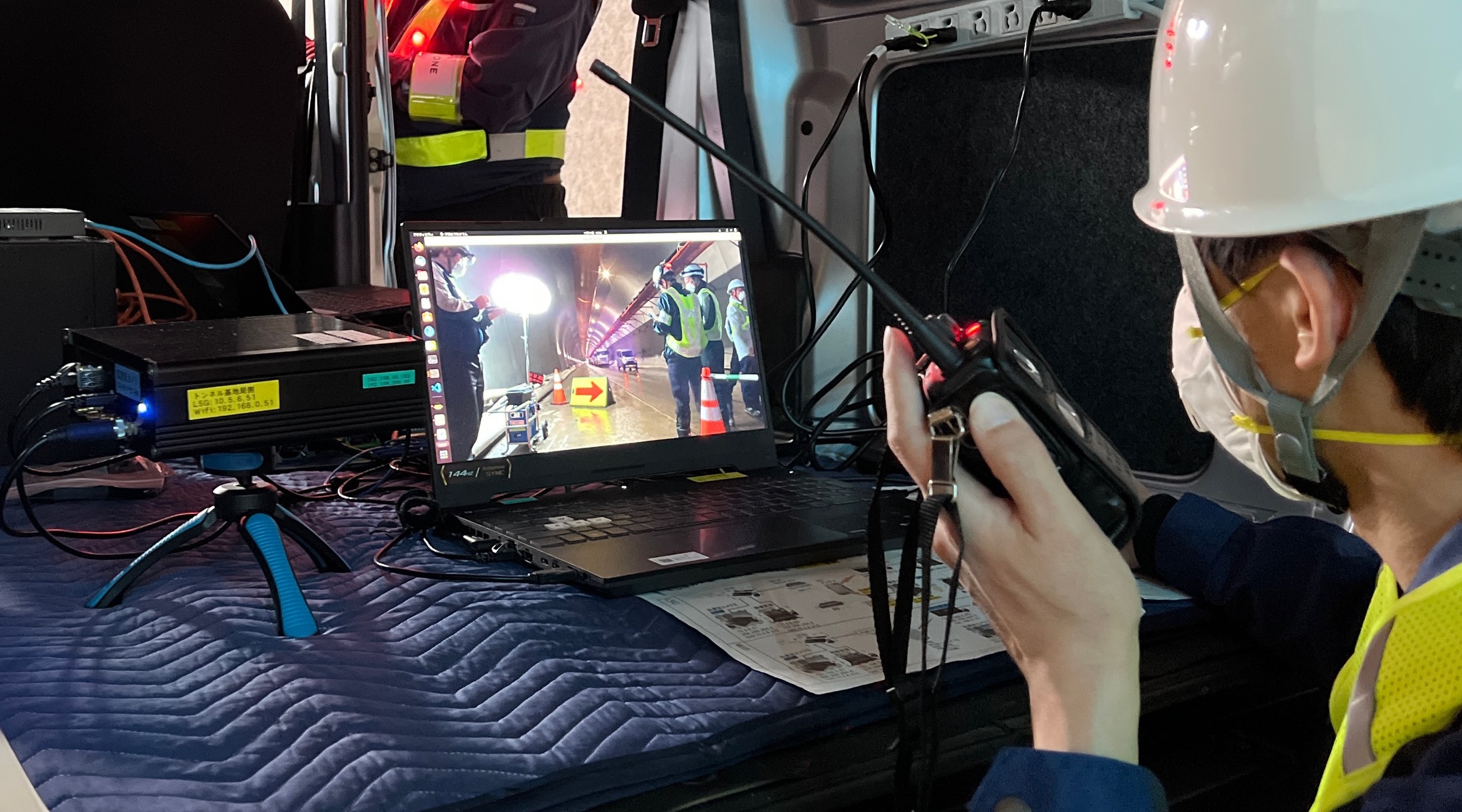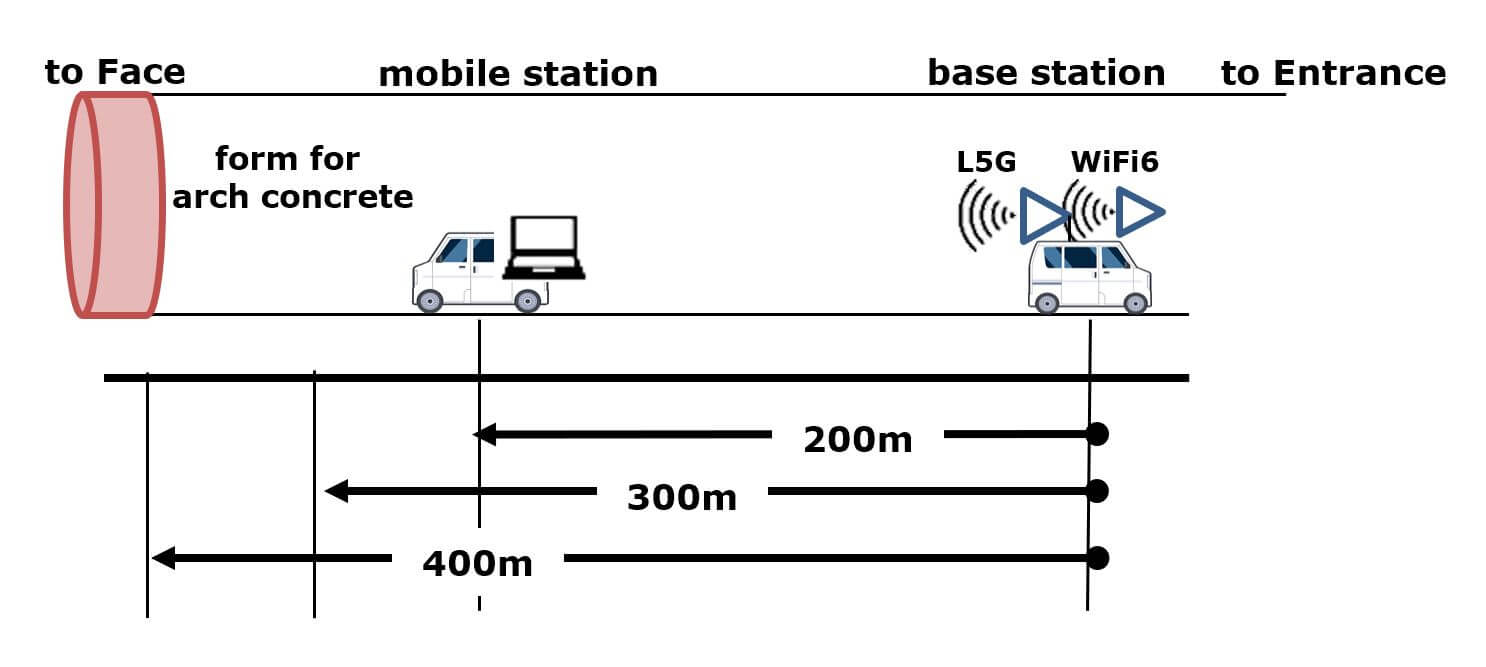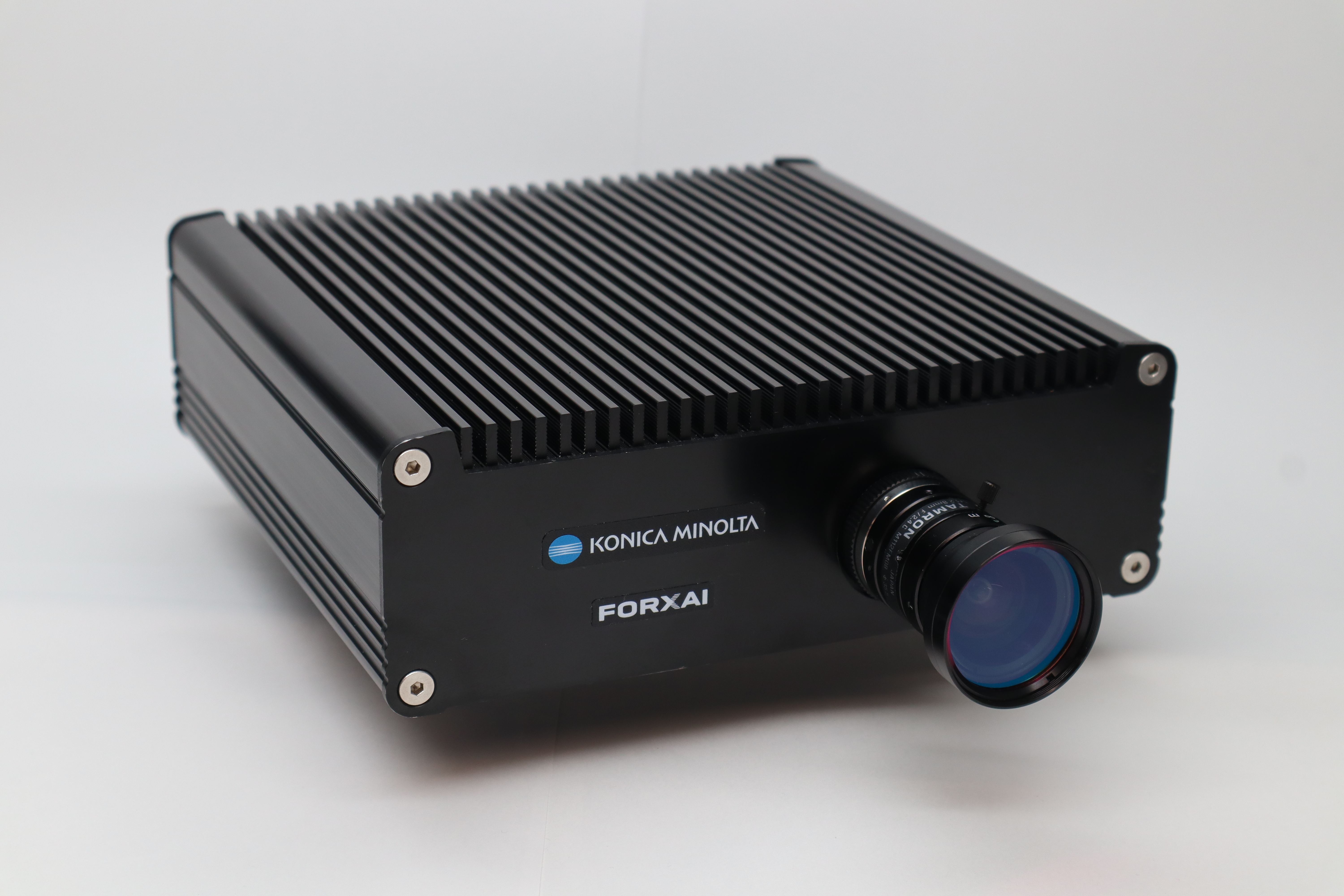News Releases
Konica Minolta Conducts a Demonstration Experiment of a Low-latency Camera Using Private 5G in a Tunnel
Aiming to Establish Remote and Unmanned Operation Technologies for Construction Machinery and Improve Productivity
February 3, 2023
Tokyo (February 3, 2023) – Konica Minolta, Inc. (Konica Minolta) today announced that the company has conducted a demonstration experiment of a low-latency camera using private 5G*1 in a tunnel under construction in cooperation with MIRAIT ONE Corporation (MIRAIT ONE) and HAZAMA ANDO CORPORATION (HAZAMA ANDO).
Background of the Experiment
In Japan, labor shortages due to the shrinking working-age population have become a serious social issue. The construction industry in particular is struggling to find enough workers to meet the demand and needs to improve the working environment.
To solve these issues through DX, Konica Minolta conducted a demonstration experiment using private 5G at a tunnel construction site in cooperation with MIRAIT ONE and HAZAMA ANDO with the aim of establishing remote and unmanned operation technologies for construction machinery and improving productivity.
Konica Minolta believes that these technologies will improve the work efficiency and safety at construction sites and help significantly improve the working environment. The company will continue the development and verify the remote operation of construction machinery by analyzing and using the data gathered by this experiment.
Testing of a Low-latency Camera
Konica Minolta’s low-latency camera was connected to a private 5G environment set up inside a tunnel, to test the transmission of ultra-high-definition video The transmission of video and latency time were examined while increasing the distance between the camera and a monitor, which received the packets and displayed the video, to 200, 300, and 400 meters. As a result, it was confirmed that 4K ultra-high-definition video packets were transmitted with a latency of 100 milliseconds (0.1 second)*2 or less from the time of image capture by the camera to display of the video on the monitor at all the distances.
These technologies will enable remotely operated construction machinery to be stopped in an emergency, for which no latency is allowed, and achieve smooth operation without awkward delays even in special environments such as tunnels. Real-time transmission of 4K ultra-high-definition video packets will also make it possible to detect hazards by AI image analysis.


Features of Konica Minolta’s Low-latency Camera
Konica Minolta has been working on achieving ultra-low latency in an entire system from camera to server by using its imaging IoT platform FORXAI to develop a real-time operation system.
When video packets are received by a device that is located away from a camera, latency (time lag) in the video occurs depending on the transmission time. Generally, a person notices an uncomfortable delay when the latency exceeds 100 milliseconds (0.1 second). Because the latency of ordinary network cameras ranges from several hundred milliseconds to several seconds, real-time remote operation is difficult and cannot be achieved by reducing the communication time alone by using 5G. To take full advantage of the large-capacity low-latency communication feature of 5G, it is necessary to reduce the latency of the entire system, including the camera that transmits video packets and the server that receives them.
The low-latency camera used for the experiment supports 5G and can transmit up to 4K ultra-high-definition video packets with a latency of as little as 50–70 milliseconds (0.05–0.07 seconds). This system is expected to achieve remote operation without latency for all types of machinery, including construction machinery, and thus help significantly reduce the labor required at construction sites and plants while improving safety. Konica Minolta will further accelerate the development toward practical application at an early stage.


Konica Minolta will continue to promote DX using low-latency cameras and contribute to improving worksites and realizing a safe and secure society.
Reference Information
The following is an overview of this project to improve the efficiency of construction work in a tunnel and verify private 5G toward improving safety, including an experiment using a low-latency camera.
| Objective | To confirm the propagation characteristics of private 5G radio waves in a tunnel, which is a special environment, and the influence on low-latency transmission of ultra-high-definition video packets |
|---|---|
| Period | November 19 and 20, 2022 |
| Overview | ・The distance between a private 5G base station and a mobile station in a tunnel was varied and radio waves were measured at each distance. It was found that the radio wave intensity did not attenuate sharply when the distance was increased at 100-meters intervals from 200 to 300 to 400 meters. The throughput*3 was confirmed to be good. ・The video transmission of the low-latency camera was verified in a private 5G environment. It was confirmed that 4K ultra-high-definition video packets were transmitted with a latency of 100 milliseconds or less from the time of image capture by the camera to display of the video on the monitor even when the camera was 400 meters away from the monitor for receiving packets and displaying the video. |
Roles of each company
| MIRAIT ONE | ・Build a wireless communication area in a private 5G and Wi-Fi 6 environment in a tunnel ・Verify the radio wave characteristics and measure the propagation |
|---|---|
| HAZAMA ANDO | ・Provide a demonstration site ・Study the method of building a base station for an enclosed space such as a tunnel, and ensuring safety |
| Konica Minolta | ・Verify the operation of a low-latency camera in a private 5G and Wi-Fi 6 environment |
*1Private 5G: A system which enables companies and local governments to build and maintain their own 5G networks. It ensures strong security because its operation can be isolated from external networks. Superb communication stability helps achieve high-speed low-latency communication.
*2One millisecond is 0.001 second.
*3Throughput: Processing performance and amount of data transferred per unit time
